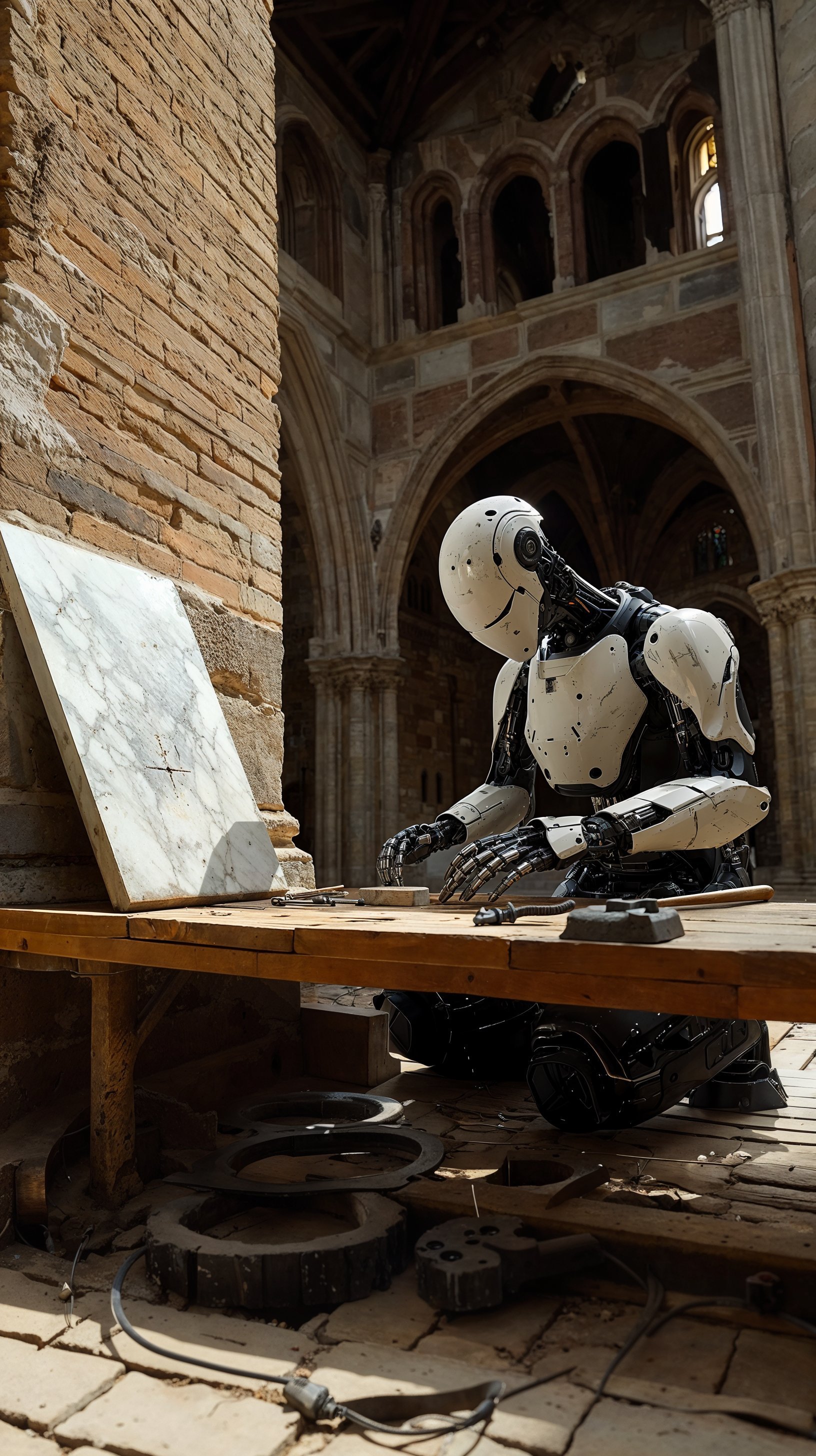
Teaching Robotic AI how to maintain our built heritage.
Image: The future, a specially trained dextrous humanoid repairing a gothic church. On site. Unsupervised.
In collaboration with:
About:
There’s a lot of excitement in robotics about applications in manufacturing and warehouse logistics (see: Figure, Tesla, Agility Robotics), in-home assistance (see: 1X Robotics), and even construction (see: Built Robotics, Canvas, Dusty Robotics).
While these advances are promising, we believe there’s a critical blind spot:
Our built heritage.
Historic buildings are increasingly at risk, caught in a destructive cycle:
There's a growing shortage of skilled heritage maintenance and construction workers, and fewer young people are entering these fields each year.
This scarcity drives up the costs of hiring heritage specialists, forcing building owners to defer maintenance until it becomes urgent, dangerous, and even more expensive.
Many of these buildings risk abandonment or demolition without affordable solutions, resulting in an irreplaceable loss of cultural heritage and a significant waste of embodied carbon.
The effects of climate change (droughts, hurricanes, flooding, etc) are damaging these assets and making it more expensive to maintain, insure, and safeguard these buildings.
As the number of heritage buildings declines, there’s less work for specialists, reducing career opportunities in this field. This only deepens the skills shortage, further driving up costs.
Without intervention, this cycle will continue to erode our architectural heritage. In the UK, approximately 1,300 heritage assets are currently at risk—a number that increases by around 10% each year. Meanwhile, in the US, over 97,000 properties are recognized for their historic significance, many of which face similar threats. We believe robotics can offer an in-situ solution that preserves the past while embracing the future. However, this vision is unattainable without the development of highly specialized training data.
That’s exactly what Vulkan-AI is building.

